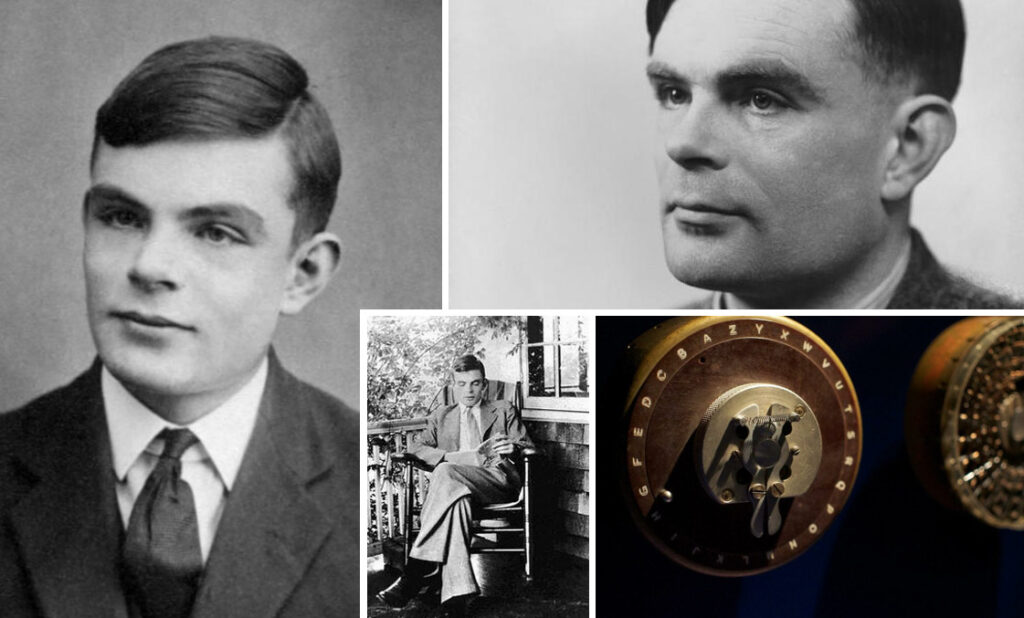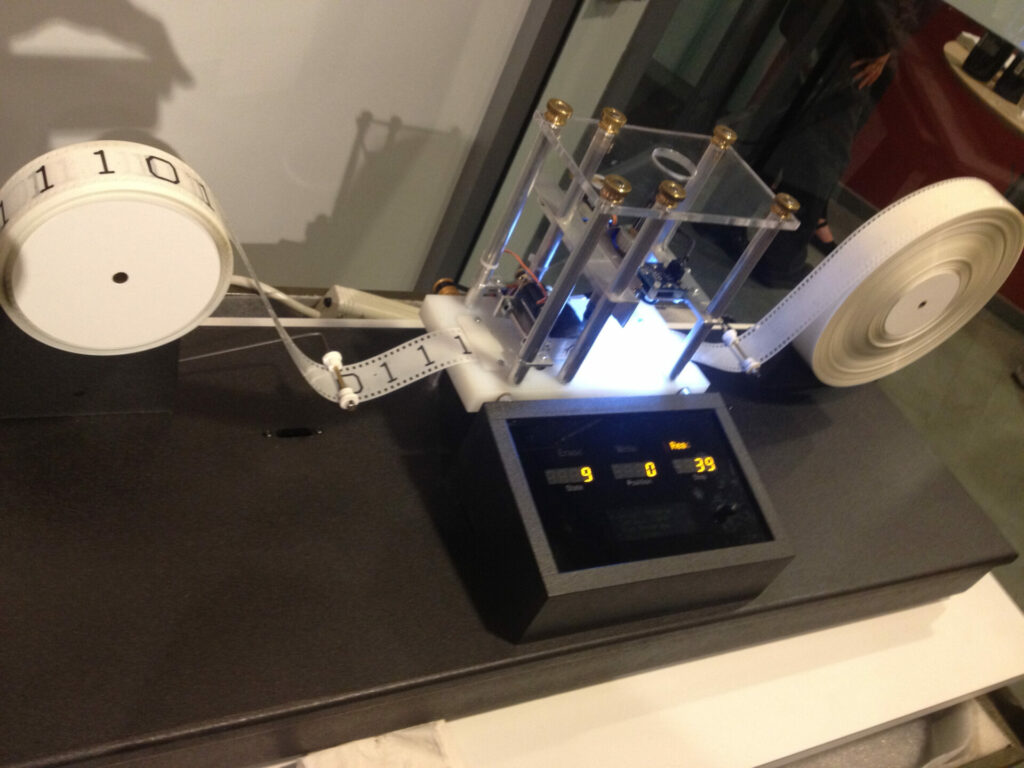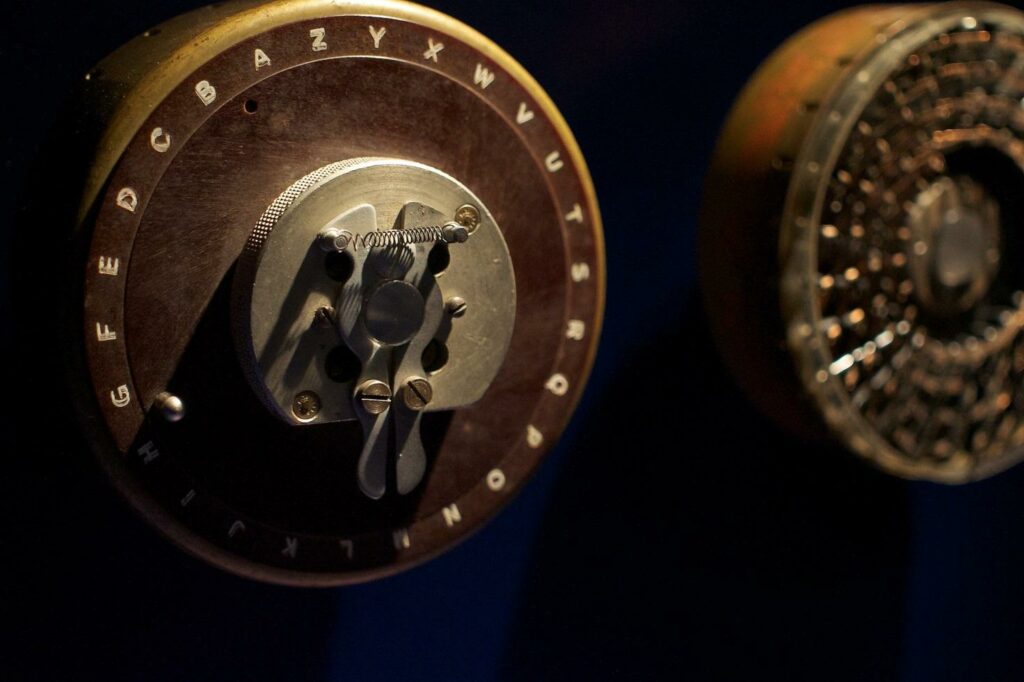
Madras, early 1900s. The British Empire dominates India. Julius, a history graduate from Oxford University, serves as a colonial administrative clerk in the Indian Civil Service. He and his wife, Sara, born in Madras and the daughter of an engineer, are expecting their second child.
Given the political instability of the period, they decided to return to England and give birth to their child in London. On June 23, 1912, in the Maida Vale neighborhood of North London, the newborn gave his first cry.
Julius Turing and Ethel Sara named their child Alan Mathison Turing. After moving to the south of England, on the southern coast of East Sussex , within a few months of each other, Julius and Sara returned to India. However, given the precarious health of little Alan, the parents decided to leave their two brothers, John and Alan, in foster care in London.
Alan suffers from rickets, a skeletal disease that begins in childhood. His parents, therefore, prefer to spare him a long and stressful journey to India, leaving him in the care of an elderly couple from Hastings, East Sussex.
But not only that, later, upon returning to England, his mother discovers that Alan also suffers from mental disorders. He can quickly switch from crying to anger and back again. Despite these personality disorders, however, she describes him as a sociable, intelligent, and somewhat charming child.

Alan’s Personality
From an early age, even before he could read, he showed an interest in numbers and a lively mind. His passion for science, but also for geography, drove him to experiment and invent. But he didn’t just love studying; Alan also loved cycling and running.
This passion for physical activity would remain with him throughout his life. Alan had a childlike personality even as an adult. He wasn’t vain and didn’t care much about his appearance, almost to the point of appearing sloppy. At twenty-two, he received a teddy bear as a gift and, curiously, knew the wicked witch’s spell from Snow White by heart.
Among his many eccentric behaviors was hiding his teacup or chaining it with a padlock to prevent it from being stolen.

After returning to live with his mother, at the age of thirteen he enrolled at Sherborne School (a school that later also included the actor Jeremy Irons and the writer John le Carré). During his studies, he immediately demonstrated a penchant for mathematics and a great ability to perform mental calculations.
And it was here, in his final years, that Turing fell in love with another student, who died prematurely of tuberculosis. Thanks to a scholarship, he enrolled at King’s College, Cambridge, in 1931 to study mathematics, graduating with honors in 1934. In April 1936, he published the article “On Computable Numbers,” in which he introduced the algorithm and the concept of a Turing machine.
This paper demonstrates that there exists a class of problems without an algorithmic solution that plays a fundamental role in the theory of computation. In 1936, Turing entered Princeton University (USA), where he earned a doctorate in mathematics in 1938. His paper was noticed by one of the leading scientists of the time, John von Neumann.

The Turing Machine
This mathematical model is used to study the foundations of theoretical computer science. A Turing machine is an abstract executor capable of performing only elementary operations. It is called abstract because it can be imagined as having infinite memory and no execution or computation times. This allows for abstraction from the physical executor (computer). This ideal executor is what is technically called a computational model. This abstraction from the computer allows for the transition from a physical environment to a mathematical one. This machine is a classic computational model, but not the only one, perhaps the best known.
It’s intuitive to think that this abstraction doesn’t possess the same characteristics one might expect from a modern computer. But although it may seem like an oversimplification, this classic model of theoretical computer science is used to describe concepts and properties of Complexity Theory and Computability Theory.

Theories that study which problems can be solved automatically and which cannot. In short, Computability Theory tells us which problems are worth trying to solve and which are unsolvable, and whether there are solution algorithms.
Complexity Theory helps us understand the intrinsic complexity of problems. That is, given a problem, how complicated is it to solve? And how many computational resources are required for a specific solution to a problem?
A Turing machine consists of an unlimited tape divided into cells, which can essentially be called its memory. Each cell can contain symbols belonging to one of the machine’s alphabets.
The information contained in each cell must be finite, a single symbol, be it a letter or number, but not a string of arbitrary length. The magnetic tape is therefore where our executor receives input data and writes the data for intermediate calculations. A moving head, whose task is to read, write, or erase a symbol from the cell on which it is positioned.
This head can be considered the processor and is governed by a program (a series of instructions) which tells the machine what to do depending on the configuration it is in and the symbol it finds, that is, it can: read, write, erase or move one position at a time to the right or left.
To recap, a Turing machine consists of an unlimited tape, a head, and a sequence of instructions. It may surprise you to learn that such a simple conceptual model is, in theory, capable of performing any type of mathematical operation.
This simple yet powerful tool manages to define the notion of computation. More simply, every problem is decidable, solvable, if and only if it is possible to define a Turing machine that solves that problem. In other words, what can be done with this abstract machine given the appropriate instructions is what any computer can do.
Let’s reduce this even further by saying: The newest or fastest computer, in theory, can’t do anything more than this simple conceptual object. It can only do it faster.
Can a machine think? This is what Turing asked himself. He publicly formulated this question in the English journal Mind . The article proposed a test, which would later become a benchmark, for distinguishing intelligent behavior in computers.
The test involves three actors. A referee (a natural person) who, from a terminal, issues questions to a person and a computer, respectively. If the referee is unable to distinguish the answers formulated and received by the person from those received by the machine, then the machine is acting intelligently.
To pass this test, we had to wait until 2014, when the chatbot Eugene Goostman was released. This software successfully passed the Turing Test, fooling a large portion of the test’s judges. Not only that, anyone surfing the web frequently encounters a reversed Turing Test.
What’s called the “Completely Automated Public Turing Test to Tell Computers and Humans Apart,” better known as CAPTCHA. In this case, the computer, acting as referee, attempts to distinguish human behavior from automated behavior. Software capable of performing automated actions on the web is called robots, or more simply, bots.
In 1939, at the beginning of World War II, Turing was recruited by the British Army at Bletchley Park as a cryptanalyst to break German codes. This was aided by the first electronic computer, dubbed ” Colossus ,” built under Turing’s supervision and entering service in 1943.
In 1944, Turing was tasked with developing a computer, the Automatic Computing Engine (ACE), capable of competing with von Neumann’s American EDVAC project. In 1947, Turing conceived the idea of computer networks, the concept of software subroutines, and also described the basic ideas of neural networks.

The end
Turing continued to design computers based on the von Neumann architecture. The Mark I was completed in 1948 before the EDVAC. He also designed a programming language for it. Another of Turing’s research fields was artificial intelligence, a discipline born from the article “Computing Machinery and Intelligence,” published by Turing in 1950.
The first sentence of this article is very famous: “I propose to consider the following question: Can machines think?” Turing later proposed a method called the Turing test to determine whether a machine can exhibit intelligent behavior.
Turing’s career came to a sudden halt after he was indicted and convicted for conduct unethical to the times. Two years after his conviction, Turing committed suicide by eating an apple laced with cyanide. The apple was found next to his body, and by chance it crossed paths with that line he knew by heart as a boy: the wicked witch’s spell from Snow White.
Follow us on Google News to receive daily updates on cybersecurity. Contact us if you would like to report news, insights or content for publication.
